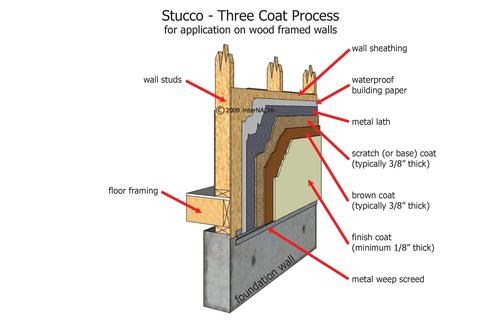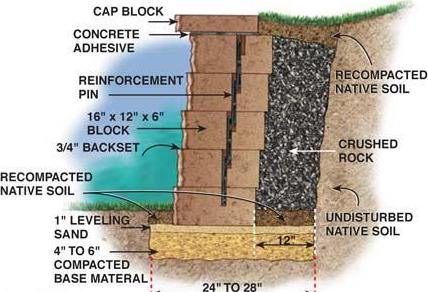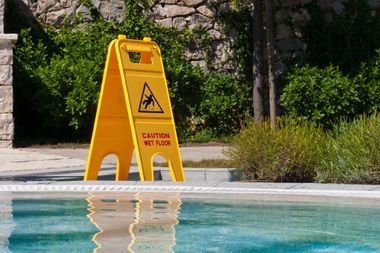Stucco and Water Intrusion – Industry Practice vs. Building Codes
Stucco is one of the most common exterior wall materials for new construction in the country. It accounted for 20.1% of the new family homes started in 2012. That percentage jumps to nearly 60% in areas of the country (such as the Mountain region) where stucco is prevalent. With such a preponderance of stucco being used, there must be standard procedures and common practices in place to ensure that it is applied correctly. Yes and No.
There certainly are procedures for applying stucco called out in the building codes, both those put out by the ICC (International Code Council), and those put out by State and local agencies. There are definitely also set procedures used by the thousands of crews applying stucco to buildings on a daily basis.
The issue that arises is that very often the process called out in the codes can be at odds with the activity practices within the industry. For instance, the ICC IRC calls out ASTM standard C1063 with regard to furring strips and self-furring lath. There are also requirements for where lath should be mounted (on the studs) and the installation of lath accessories (control joints, stucco stops, etc?). One would not have to inspect many stucco buildings to find instances where some or all of these code requirements were not met.
As a result, there are many existing stucco buildings with stucco that was not applied according to code. Does that mean if water damage occurs in these buildings then the stucco contractor is to blame for the water intrusion? Not necessarily.
Whether the stucco was applied in accordance with code or not may have no bearing on the water intrusion. The cause of the water damage could be the windows. Were the windows correctly wrapped and flashed? Were they properly manufactured? Water damage could be caused by poor roof construction or a faulty roof or drainage design. Possibly the fault lay not in the installation, but in the maintenance. Even perfectly installed stucco has to be maintained through regular painting (with proper stucco paint) and re-application of sealants at fenestrations.
For water intrusion claims and cases involving stucco, an engineer can be essential for not only determining if the stucco was applied correctly and according to the applicable building codes but also whether or not improper installation of stucco had any bearing on the water damage. These engineering experts should be experts with stucco but also with roofing systems, window installations and the proper maintenance and sealing procedures for buildings. They also should be fluent in the complex relationships with regard to accountability and responsibility between contractors and their subcontractors through a thorough understanding of the contractual scopes of work.
Submit a case or claim online.
Contact a CED Engineer in you region.






